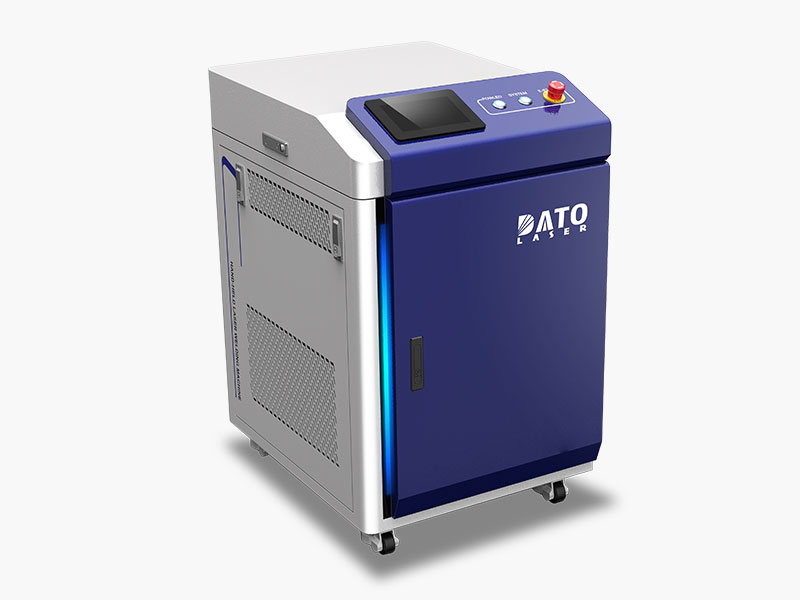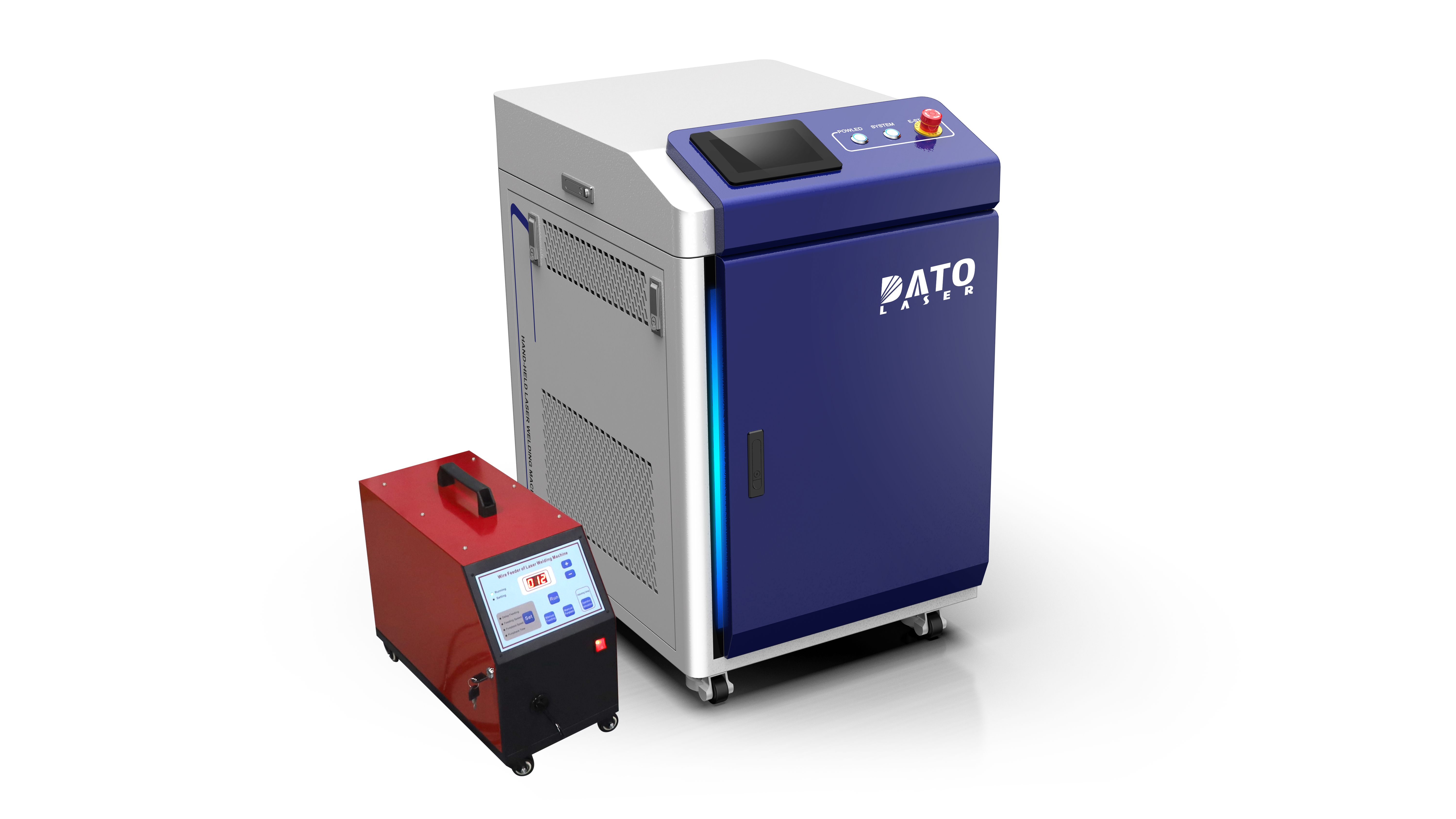The Impact of Laser Power on the Welding Process and Results

In the realm of modern manufacturing, laser welding machines have revolutionized the way industries approach joining materials. As a leading provider of advanced laser solutions, Dato and Leapion understand that one of the most critical factors influencing the effectiveness of laser welding is the power of the laser itself. This article delves into how laser power affects the welding process and results, ensuring a clear understanding of its implications for various applications.
Understanding Laser Power in Welding
Laser power refers to the amount of energy emitted by the laser source, typically measured in watts (W). In laser welding, the power of the laser is a crucial parameter that determines the depth of penetration, the speed of the welding process, and the overall quality of the weld. Different materials and thicknesses require varying power levels, making it essential for operators to understand how to adjust laser power according to specific welding requirements.
The Relationship Between Laser Power and Welding Quality
Penetration Depth
One of the primary effects of laser power on the welding process is its influence on penetration depth. Higher laser power generally results in deeper penetration, allowing the laser to melt the base materials more effectively. This is particularly important when welding thicker materials, such as those commonly found in the automotive and aerospace industries. For instance, when using a fiber laser welding machine, operators can achieve optimal penetration by adjusting the power settings to match the material thickness. Insufficient power may lead to incomplete fusion, resulting in weak joints, while excessive power can cause burn-through or warping.
Welding Speed
Laser power also directly affects welding speed. A higher power setting enables faster welding speeds, which can significantly enhance productivity in manufacturing environments. When using laser welding machines, operators can achieve a balance between speed and quality by carefully calibrating the power output. For example, in applications where high-speed production is crucial, such as in the fabrication of automotive parts, increased laser power can facilitate quicker welding without compromising the integrity of the weld. Conversely, lower power settings may be necessary for delicate operations requiring precision and control.
Heat-Affected Zone (HAZ)
The heat-affected zone (HAZ) is the area surrounding the weld that experiences changes in microstructure due to heat exposure. The size of the HAZ is influenced by laser power; higher power levels tend to create a larger HAZ. While this can be beneficial for achieving strong welds, excessive heat can lead to thermal distortion or changes in material properties. Therefore, understanding the relationship between laser power and HAZ is essential for maintaining the desired characteristics of the welded materials. Operators must consider the specific requirements of each project to optimize laser power settings and minimize unwanted effects on the HAZ.

Material Considerations
Different materials respond uniquely to laser welding, and the required laser power varies accordingly. For example, metals such as stainless steel and aluminum may require different power levels for optimal welding results. Fiber laser welding machines are particularly effective for a wide range of materials due to their ability to deliver concentrated energy with minimal heat input. Understanding the material properties and their interaction with laser power is crucial for achieving successful welds.
Thickness of Materials
The thickness of the materials being welded plays a significant role in determining the appropriate laser power. Thicker materials necessitate higher power levels to achieve adequate penetration and fusion. Conversely, thinner materials may require lower power settings to prevent overheating and distortion. Operators must assess the thickness of the materials in their projects and adjust the laser power accordingly to ensure optimal results.
Type of Material
Different materials have varying thermal conductivities and melting points, which influence the required laser power. For instance, materials with high thermal conductivity, such as copper, may require more power to achieve effective welding compared to low-conductivity materials like titanium. Understanding the specific characteristics of the materials being welded is essential for selecting the appropriate laser power settings.
Optimizing Laser Power for Successful Welding
To achieve the best results with laser welding machines, operators should consider several factors when optimizing laser power.
Calibration and Testing
Before commencing a welding project, it is essential to calibrate the laser welding machine and conduct test welds. These tests allow operators to assess the impact of different power levels on the welding process and results. By experimenting with various settings, operators can determine the optimal laser power for their specific applications, ensuring consistent quality and performance.
Monitoring and Adjusting Power
During the welding process, operators should continuously monitor the results and make adjustments as necessary. Factors such as material movement, changes in thickness, and variations in ambient conditions can affect the welding outcome. By being vigilant and responsive, operators can maintain the desired power levels and ensure high-quality welds throughout the production run.

Conclusion: The Importance of Laser Power in Welding
Understanding the role of laser power in the welding process is crucial for achieving optimal results with laser welding machines. The power of the laser directly influences penetration depth, welding speed, and the heat-affected zone, all of which are critical factors in determining the quality of the weld. By carefully calibrating and adjusting laser power settings according to the specific requirements of each project, operators can harness the full potential of laser welding technology.
At Dato and Leapion, we are committed to providing advanced laser welding machines that meet the diverse needs of our clients. Our expertise in laser technology ensures that businesses can achieve exceptional results while maximizing efficiency and productivity. By embracing the capabilities of laser welding, industries can elevate their manufacturing processes and maintain a competitive edge in the market.
Related Blogs
-
 Exploring the Safety, Precision, and Industrial Benefits of Laser Surface CleaningIn today’s fast-paced industrial world, where quality, efficiency, and sustainability are top priorities, manufacturers are constantly seeking better ways to clean metal surfaces without compromising material integrityBlog
Exploring the Safety, Precision, and Industrial Benefits of Laser Surface CleaningIn today’s fast-paced industrial world, where quality, efficiency, and sustainability are top priorities, manufacturers are constantly seeking better ways to clean metal surfaces without compromising material integrityBlog -
 A Complete Guide by DATO and LeapionIn modern industry, surface preparation and maintenance play a crucial role in achieving high-quality manufacturing results. Laser cleaning machines have emerged as one of the most innovative, efficient, and environmentally friendly tools for removing contaminantsBlog
A Complete Guide by DATO and LeapionIn modern industry, surface preparation and maintenance play a crucial role in achieving high-quality manufacturing results. Laser cleaning machines have emerged as one of the most innovative, efficient, and environmentally friendly tools for removing contaminantsBlog -
 Laser cleaning machines are revolutionizing industrial surface cleaning by offering a faster, safer, and more eco-friendly alternative to traditional methods. Whether removing rust, paint, oil, oxide, or other surface contaminants, laser cleaning has become a cutting-edge solution in manufacturing,Blog
Laser cleaning machines are revolutionizing industrial surface cleaning by offering a faster, safer, and more eco-friendly alternative to traditional methods. Whether removing rust, paint, oil, oxide, or other surface contaminants, laser cleaning has become a cutting-edge solution in manufacturing,Blog -
 Introduction: Transforming EV Battery Manufacturing Through Laser TechnologyThe electric vehicle revolution has accelerated dramatically over the past decade, bringing with it unprecedented challenges and opportunities in battery manufacturing. As global automakers commit billions to electrificationBlog
Introduction: Transforming EV Battery Manufacturing Through Laser TechnologyThe electric vehicle revolution has accelerated dramatically over the past decade, bringing with it unprecedented challenges and opportunities in battery manufacturing. As global automakers commit billions to electrificationBlog













